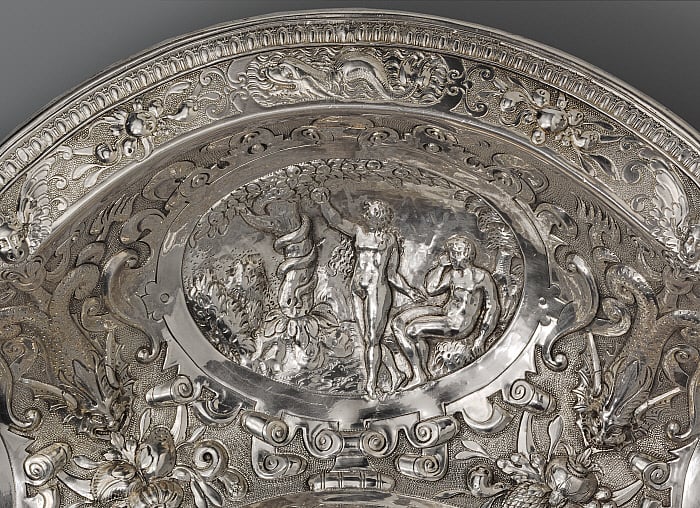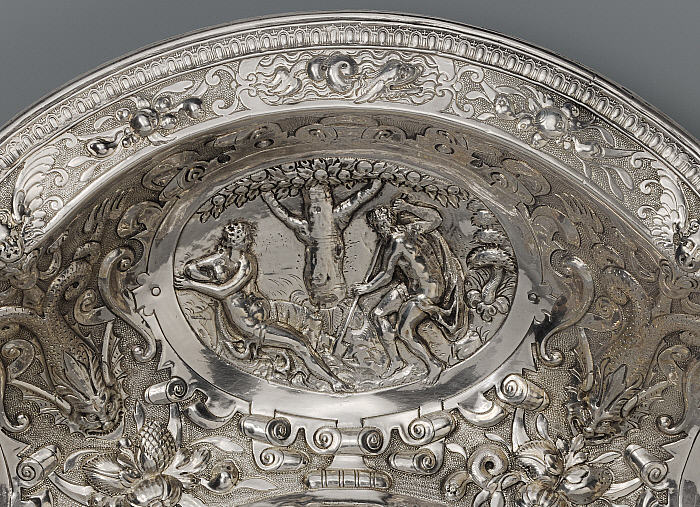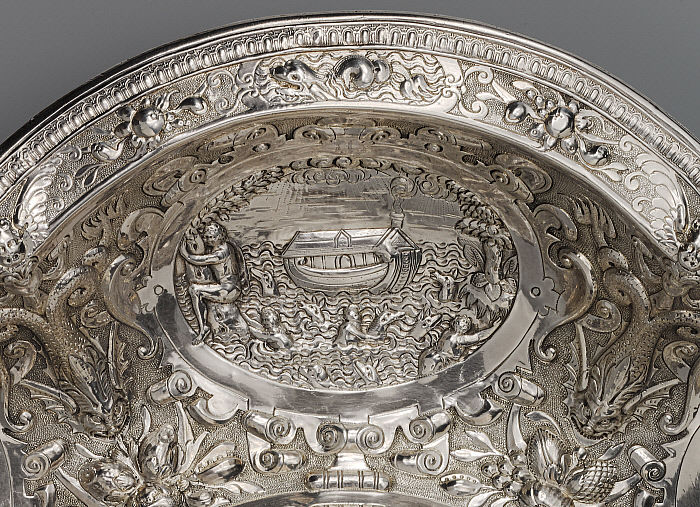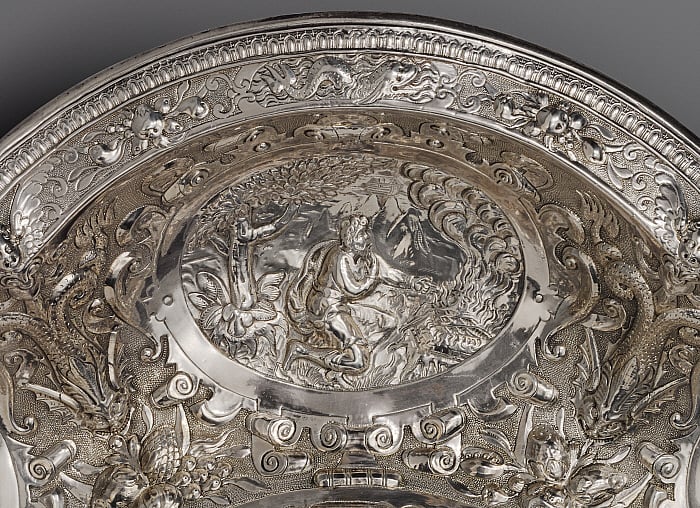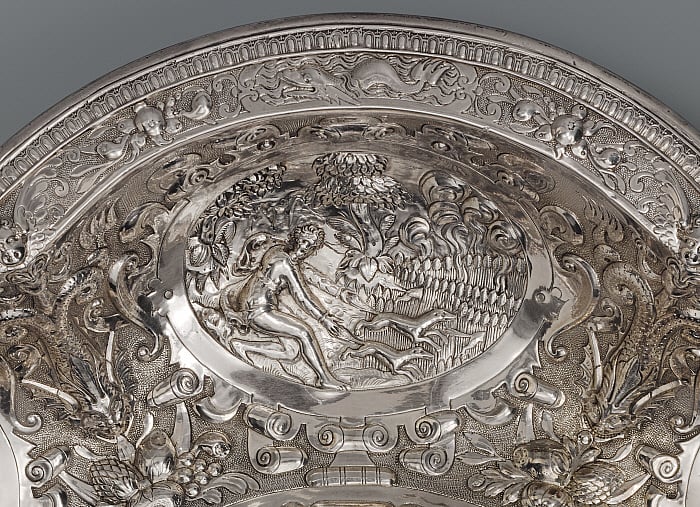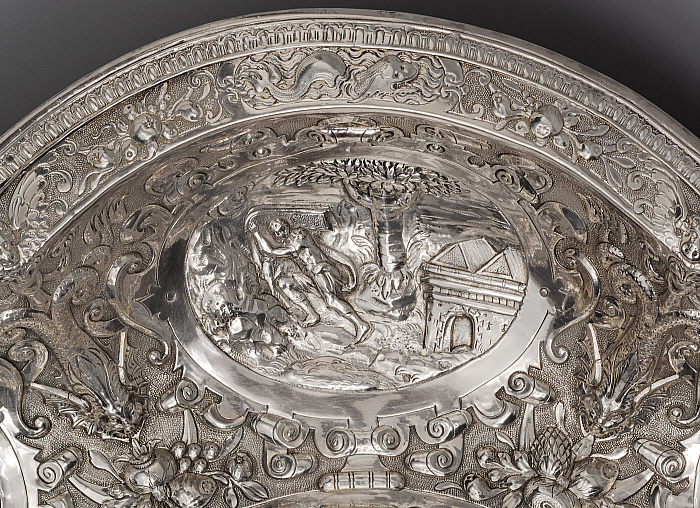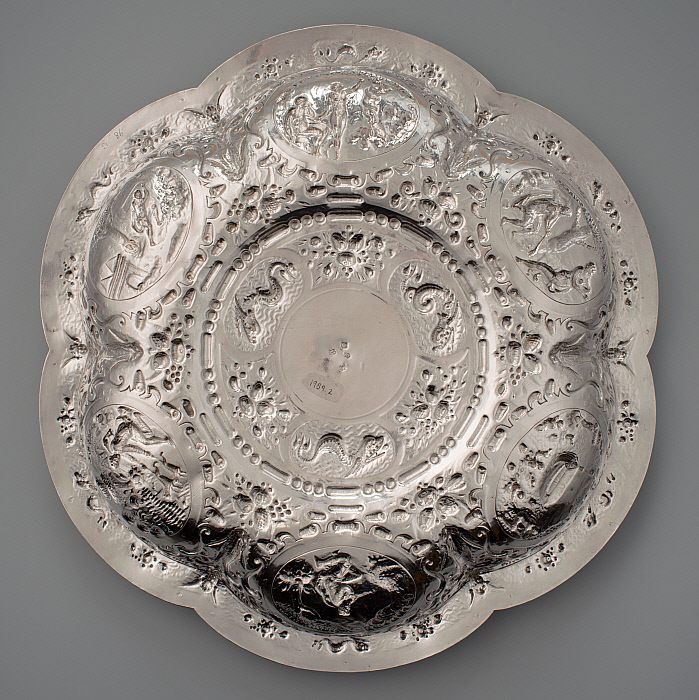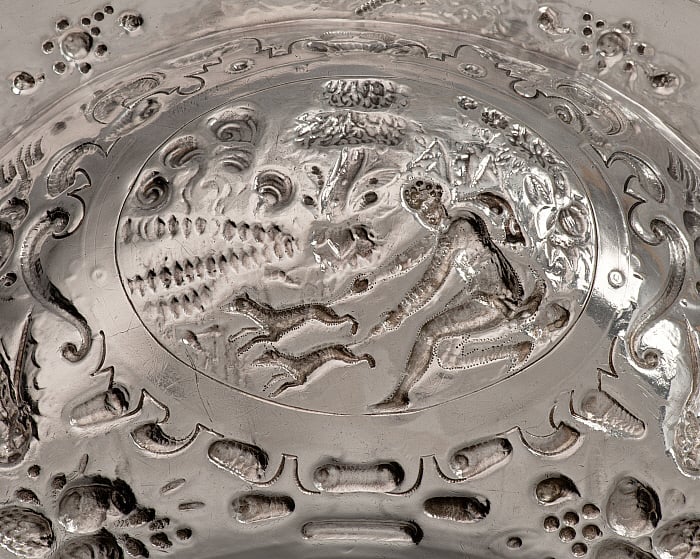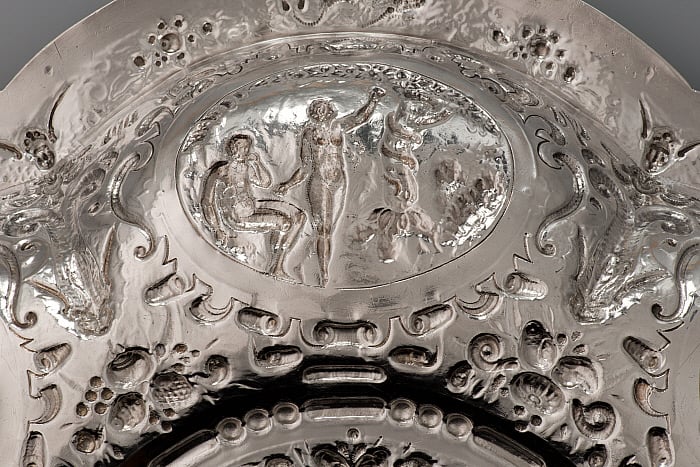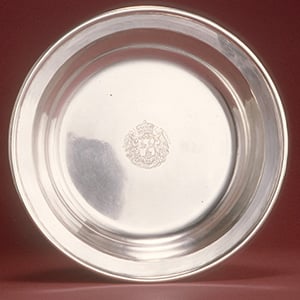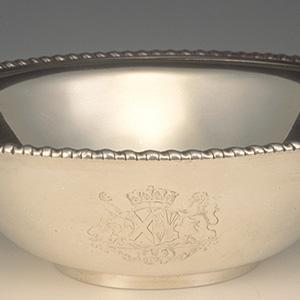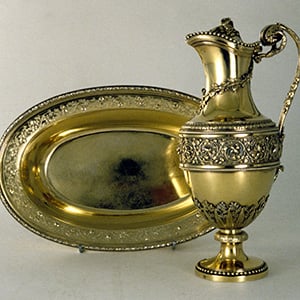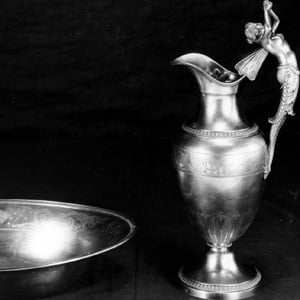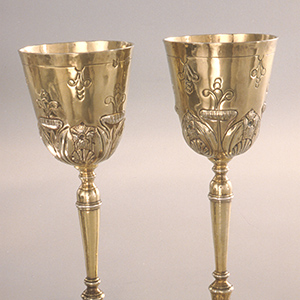Maker's Mark IV with a star below
probably Dutch or Flemish, active in England, 17th century
Basin
1618
Before forks became widely used, basins and ewers were used in aristocratic settings to wash hands in rosewater between courses of a meal. This ornate basin must have been made for a special occasion and used rarely. At its center is a detachable circular boss, which could be easily replaced to accommodate a new owner’s coat of arms. Surrounding the boss are sea creatures and fruit, while the outer circle is decorated with oval reliefs illustrating stories from the Hebrew Bible.
| Medium | silver |
| Dimensions | 2 1/2 x 20 x 20 in. (6.4 x 50.8 x 50.8 cm) Troy weight: 98 toz (3048 g) |
| Object Number | 1989.2 |
| Acquisition | Acquired in honor of Charles Buckley, 1989 |
| Status | On View |
Image Caption
Maker's Mark IV with a star below, Basin, 1618, silver. Clark Art Institute, Acquired in honor of Charles Buckley, 1989.2
Select Bibliography
Provenance
Earl of Mount Edgecumbe, sale Hurcomb's, London, by 1932;¹ bought by S. J. Phillips, London;² with Apsrey PLC, London; sold to Sterling and Francine Clark Art Institute, 2 May 1989, purchased in honor of Charles Buckley. 1. The basin was exhibited by S. J. Phillips, Ltd., in the Art Treasures Exhibition held at Christie’s 12 October–5 November 1932 (cat. no. 624), captioned in the in the catalogue “From the collection of the Earl of Mount Edgecumbe.” According to Martin S. Norton of S. J. Phillips, it had been purchased in the 1930s at Hurcomb’s; see letter to Beth Carver Wees, 6 December 1990 in Sterling and Francine Clark Art Institute curatorial files. William Edward Hurcomb held sales in London from the early 1920s to about 1932. Advertisements of his auctions, which were held in Piccadilly at the Grafton Galleries, appeared in the leading periodicals, where he announced "Weekly Sales of Old Silver and Jewellery. Fortnightly Sales of Antique Furniture, Pictures, China, etc."; see, for instance, Connoisseur 84 (December 1929): lx, and 87 (June 1931): liv. Among the outstanding objects to pass through his hands were the Vyvyan Salt, now at the Victoria and Albert Museum, which was sold in 1924, and the Treby Toilet Set, now at the Ashmolean Museum, Oxford, sold in 1921; see Philippa Glanville, Silver in Tudor and Early Stuart England: A Social History and Catalogue of the National Collection, 1480–1660, 1990, p. 459, and London, Goldsmiths' Hall, Paul de Lamerie: At the Sign of the Golden Ball, 1990, cat. no. 27. He published his memoirs in the two-volume Life and Diary of W. E. Hurcomb (London: Sanders, 1928). 2.The basin was lent to various American museums between 1950 and 1987. It was placed on loan to the Wadsworth Atheneum, Hartford, Connecticut, in 1950 and was lent to the Art Institute of Chicago from 196 until 1973. It was exhibited on loan to the Sterling and Francine Clark Art Institute from 1973 to 1987.

